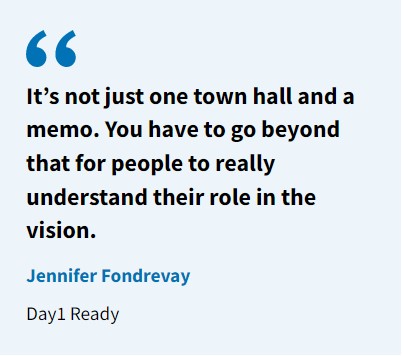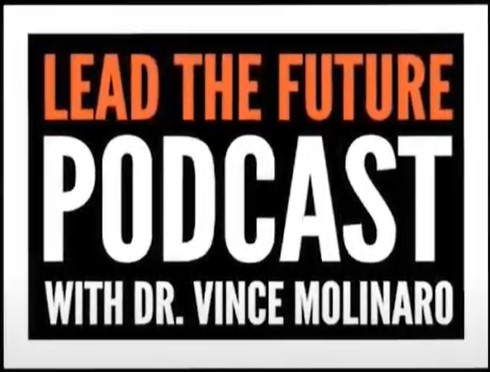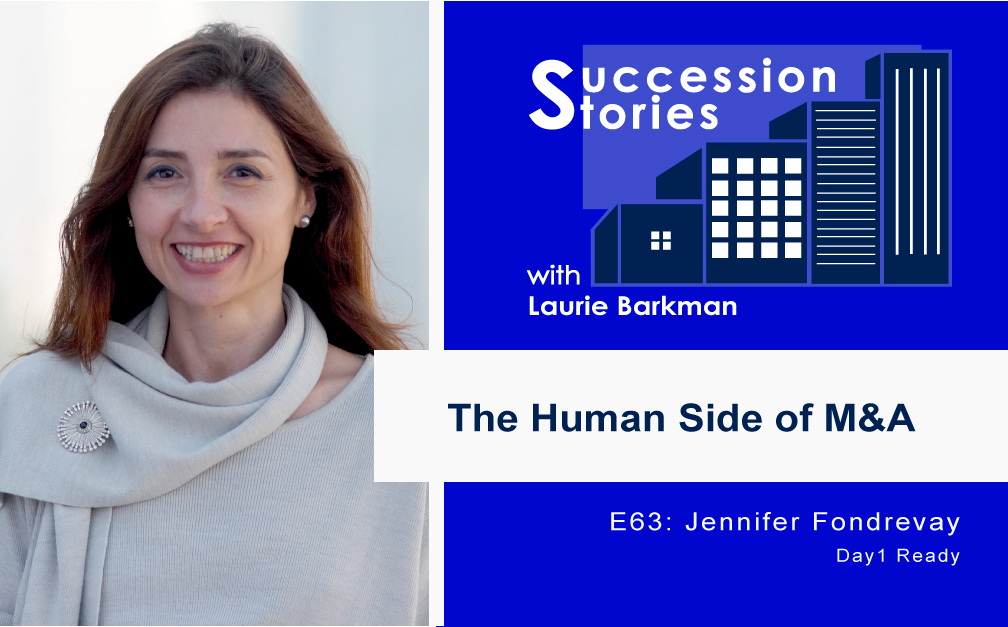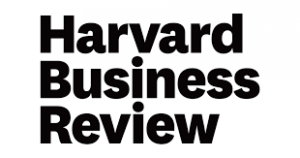PODCAST: Preparing for and Managing the People Challenges of M&A
Jennifer joins Dr. Vince Molinaro on Lead the Future to discuss how senior leaders can prepare for human capital challenges when undergoing a merger or acquisition, as well as how leaders themselves can navigate the changing and often ambiguous environment that arises post M&A.
GUEST POST: Middle Market Growth – Post-Transaction Integration: It’s All About the People
Jennifer was honored to speak at ACG’s April InterGrowth conference. On the panel “Managing Post-Transaction Integration: How to Achieve Cultural & Operational Success,” experts shared their experiences and advice for how to ensure M&A deals have positive outcomes.
The merging of two entities will undoubtedly ruffle some feathers, and human capital should be the focus of developing an effective post-transaction strategy. Yet Jennifer notes that the people of a merged entity are rarely the focus of post-transaction due diligence, and are more often an afterthought.
Trust, she said, is “critical to business success.” Yet it can dissipate virtually overnight following a merger because the majority of post-transaction integration planning is focused elsewhere. And in trust’s absence, an “us-versus-them” mentality can emerge that threatens to derail post-transaction success.
Read the full article here.
PODCAST Succession Stories: The Human Side of M&A Deals
Did you know that 80% of mergers and acquisitions fail? An often overlooked yet critical aspect of M&A deals and transitions is the people factor. Jennifer Fondrevay, Founder of Day1 Ready, advises senior executives on how to plan for expected challenges. Listen in as Laurie Barkman talks with Jennifer about the emotional aspect of business transition, and how those emotions come into play for a newly merged organization. If you’re anticipating a company transition in your future, listen in to learn more about how strategies around the human factor can drive greater success in M&A deals.
Listen in to learn more about:
- What to anticipate from your workforce when you announce an M&A deal
- Three key things to consider when buying or selling a business
- Benefits of a human capital-centric approach to M&A
- How to build confidence and synergy among different parties involved during a transition
5 Best Practices When Crafting your M&A Onboarding Experience
Post mergers & acquisitions (M&A) onboarding is NOT your typical onboarding journey. However, intentional planning and appreciation for your new employees’ mindset can play a critical role in setting your new employees up for success.
In an M&A scenario, employees have not been actively recruited to join your company. The excitement and eagerness to “be part of the team” are not typically there. In fact, if the newly acquired company will be changing its name to the acquiring company, these new employees may even think about revolting. This reality requires a different mindset and approach as you onboard your employees.
Read all 5 best practices in my guest article for Silk Road Technologies.
Addressing the ‘People Piece’ of M&A
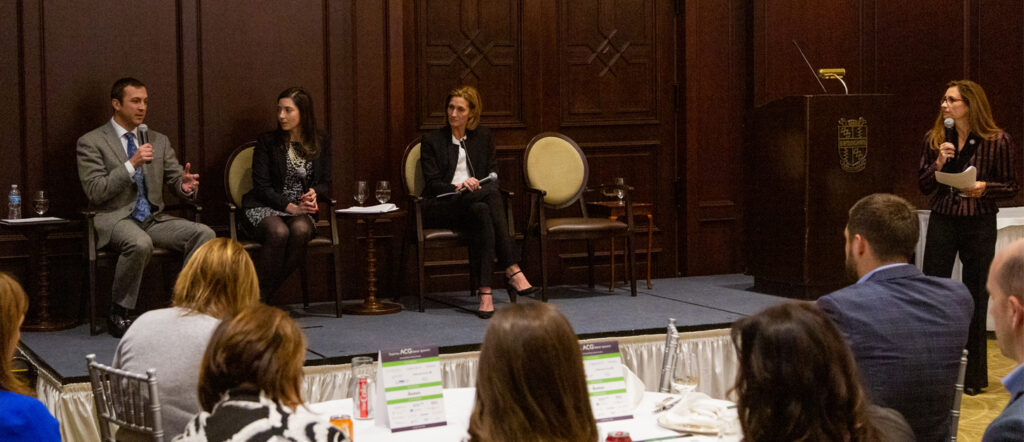
Deal success can hinge on how companies address human capital as they plan and execute an M&A transaction, according to panelists at a recent ACG Detroit event who discussed how to mitigate blind spots, prepare for the unexpected, and look beyond financials.
The chapter’s November lunch and learn program, titled “Uncovering the Blindspots of the M&A Deal Journey,” also explored cultural challenges, including the “us v. them” dynamic that can arise after an acquisition, and how to retain talent after a deal closes.
I served as moderator for the discussion, which featured three executives from the Detroit area who offered perspectives from private equity, investment banking and consulting. They included Emily Murto, vice president of private equity firm Stratford-Cambridge Group; Ellen Clark, managing director of M&A advisory firm Greenwich Capital Group; and Dan Ellis, director of Townsend Search Group, an executive search and consulting firm.
Below are insights from the panelists. (Comments have been condensed for clarity).
Avoid blind spots by considering the people, getting alignment, being prepared and establishing clear expectations
Jennifer Fondrevay: As a C-Suite marketing executive, I experienced three separate multi-billion dollar acquisitions. I determined there had to be a better way of managing the people aspect. The research I conducted over 2 ½ years with executives from all sides of the M&A deal equation confirmed the “unexpected people problems” often cited for deal failure can be expected. Pre-planning your organizational structure and people strategy at the very early stages will set your workforce up for success and accelerate their productivity.
Ellen Clark: One of my biggest challenges is making sure the shareholders’ expectations are correct and aligned, and making sure they are truly ready to sell the business. The other is making sure they are prepared for the process. I set expectations up front that they must remain engaged throughout—it’s not going to be easy. We spend a lot of time up front getting ready, prepping the management team so they’re not lost in the conversation. Everyone becomes fixated on the finish line and we always try to slow them down.
Emily Murto: For a lot of the management teams who are selling a business, this is the first time they have gone through this transaction. I try to be mindful of what is the easiest way for them to answer questions to make sure they are accurate and true, while being mindful that the management team may not have signed up for this.
Dan Ellis: For me [as an executive recruiter] it’s about utilizing all of your service providers to really hone in on exactly what you are looking for, and being clear on expectations. Any time executives feel like they can do it all themselves, that they are the expert in order to save a buck, that is the quickest route to failure.
“What you’re really investing in when you buy a business is the people. It’s sometimes a matter of just trying to find the right role for them.”
EMILY MURTO
Vice President, Stratford-Cambridge Group
“People” challenges can be minimized through pre-planning and defining a strategy across organizational layers
DE: Any time you introduce someone new to the business, it’s like an organ transplant: The organ may get rejected. You need to make sure that you’re staying ahead and helping to create expectations of what the role is. Define the role and define what everybody’s thoughts are on the role.
EC: You need to have alignment. I advise my sellers to ask questions, especially when talking about selling to private equity. It’s more than just dollars and cents. It’s so important that there is a culture fit. I encourage the seller to talk to others to get perspective. If it all falls apart afterwards and the company, the culture, the legacy is destroyed, then it’s just not worth it.
JF: The team you have in place may not be the team that’s going to get you to the next level. That is a tough decision. Compassion equally means being smart about the value of the people. How can that team and those individuals contribute in other ways? How can we leverage their value and not lose their expertise?
EM: What you’re really investing in when you buy a business is the people. It’s sometimes a matter of just trying to find the right role for them. An individual might have great things to contribute and just be in the wrong seat. We had an individual who had grown the business tremendously, but we knew he probably didn’t have all the capabilities needed to lead the new team going forward. We benefited from his expertise by moving him to another seat on the bus and bringing on another individual to lead.
DE: If you are not going down another layer deep you may not be aware of what’s really going on. We were involved with a confidential replacement because the company had promoted a general manager who was a toxic leader. If only the sponsor had spent more time with the organization and really talked with the people. The more people we can get involved in the organization, the better it is because we look for disconnects.
You can’t anticipate human behavior, but you should be prepared for people to transition
JF: My book highlights that when people operate from a position of fear, they change. You can expect them to act one way in one scenario, but when operating from a position of fear, all bets are off. I encourage executives to conduct a pre-mortem to consider all of the ways a decision could go wrong.
EC: It’s something I refer to as Stockholm syndrome: when a kidnapped person suddenly has compassion for their captors. In an M&A transaction, there is a shifting of loyalties. The management team will realize that the person they have seen as the enemy is going to be paying their paycheck when the transaction closes. The owner of the business selling doesn’t anticipate this. That’s why we spend so much time up front. That keeps the leverage in the hands of the selling shareholder so they’re not beholden to the individuals who have now gone over to the other side.
To hear highlights from the discussion, check out the recording of the “Uncovering the Blindspots of the M&A Deal Journey” panel.
After a Merger, Don’t Let “Us vs. Them” Thinking Ruin the Company
by Jennifer Fondrevay
When a merger or acquisition is announced, people instinctively wonder who “they” are — “they” being the company on the other side. Whether the company is known or not, there’s an instinctive reaction to regard “them” with a wary eye. Cultural differences can…
More and more companies are relying on mergers & acquisitions (M&A) as a competitive growth strategy. Since 2012, M&A activity has increased dramatically in both number of deals and size of transaction, with the yearly value of global M&A deals tracking above $4.5 trillion for the past four years. These are heady numbers and 2018 is expected to continue apace. Yet when mergers are not done correctly, the end result can be at best uncomfortable, and at worst devastating to both companies.
As part of my consulting work on mergers and acquisitions, I created a playbook that defines the best practices for optimizing the human side of M&A. To uncover the human facets and the consistent challenges of M&A, I interviewed 55 executives from multinational to small- to medium-size companies all over the world. The interviewees, who were in the process of an M&A deal or who had recently been through one, included C-suite executives, private equity dealmakers, business owners, entrepreneurs, and middle managers. From these sessions, a consistent theme emerged: M&A often fosters us-versus-them thinking, which can undermine deal success from the get-go.
One of the great ironies of M&A activity is that trust, a key ingredient for business success, often quickly dissolves, as M&A activity is usually cloaked in secrecy. A workforce can feel blindsided when a deal is announced, eroding trust and transparency in three mutually reinforcing ways:
- “Our” company versus “their” company
- Executives versus frontline employees
- Who stays versus who goes
Let’s look at each of these:
Our Company Versus Their Company
When a merger or acquisition is announced, people instinctively wonder who “they” are — “they” being the company on the other side. Whether the company is known or not, there’s an instinctive reaction to regard “them” with a wary eye. Cultural differences can emerge, particularly if the companies have been at different ends of the spectrum in the marketplace. What makes sense on paper — i.e. a high-end product-line company merging with a low-end product-line company — can devolve into an us versus them dynamic as the companies’ different approaches and cultures inevitably conflict.
Consider this example: When The Interpublic Group (IPG) merged the direct-marketing company Draft with the ad-agency Foote Cone & Belding (FCB) to become one agency in 2006, “it was immediately apparent that the cultures of the two agencies were wildly different,” shared Marty Stock, then head of Coors advertising at FCB. “In bringing together a specialist direct-marketing agency with a generalist creative shop, cultural differences were bound to arise, given the contrast in customer approach and sensibilities. The differences drove an ‘us’ and ‘them’ mentality which was never really resolved, and which made integration unbelievably difficult.” Millions of lost dollars from client defections later, FCB split from Draft and reverted back to its origins in 2014.
Insight Center
Competing in the Future How to make your company more nimble and responsive.
Examples of successful acquisitions do exist, however, where the “our” company versus “their” company dynamic is minimized, largely due to the approach of the acquiring company. When Enterprise Rent-A-Car acquired Vanguard’s Alamo Rent-A-Car and National Car Rental in 2007, rather than executing a takeover, it moved slowly and sought to learn from its new brands. “Once the deal closed,” shared Enterprise CEO Andrew Taylor, “Enterprise pursued a deliberate integration. It was far more important to do it right than to do it quickly. We acquired Vanguard at an affordable price, so we could afford a thoughtful approach. When a new direction was chosen, it would reflect the best elements of both cultures and operating approaches.”
Executives Versus Frontline Employees
As senior leaders drive the integration process, midlevel and lower-level employees can begin to perceive senior level executives as getting more than their “fair share.” A perception that senior management is making money off of midlevel employees’ hard work can emerge. Should job losses occur, tensions may intensify as the remaining workers feel burdened “doing the job of many” to implement a strategy that executives, not managers, defined.
Even when there’s been a strong camaraderie throughout the organization, people can feel betrayed when executives leave with robust pay packages. Employees are not ignorant to M&A precedents where even CEOs of failed acquisitions have left with substantial pay packages. In those moments, trust erodes.
Executives have a critical role in minimizing us versus them thinking. Demonstrating commitment to the vision in word and deed is critical, and the pursuit of every activity must tie back to how it fits (or doesn’t fit) with the bigger picture. Nothing undermines change and its adoption more than behaviors by key individuals that are inconsistent with their words. To gain the workforce’s trust you must “walk the talk.”
Who Stays versus Who Goes
Cost-cutting and job losses typically occur in M&A as companies aggressively pursue efficiencies and eliminate redundancies. Deciding who stays and who goes are hard-wrought decisions. Transparency is difficult as executives and managers are either legally prohibited from being more open or don’t know how things will play out. Trust is diluted further when, in an attempt to keep people motivated, early communications sometimes say that “nothing will change,” and yet employees see change happening as people are let go.
Kim Feil, Chief Marketing and Strategy Officer for Aspire Healthy Energy Drinks, who experienced five separate M&A deals as head of marketing for Cadbury, IRI, Kimberly-Clark, Walgreen’s, and OfficeMax, had this to share: “Leaders know that while M&A can make sense on paper, the ability to achieve the vision is only as good as the team you put together.” During her multiple M&A experiences, Feil encountered well-thought-out organizational planning as well as unexpected curve balls. “Who will still have a chair when the music stops becomes the daily question,” Feil added. “So much is dictated by timing and where you are when the music dies. That said, you can’t just hope that things will work out.”
Feil attributes her successful acquisition experiences to upfront planning with leaders from both companies. “The key was focusing on the requirements for success, defining the teams needed to achieve them, and how they would intersect. ‘Who’ did it was not part of the upfront discussion, just the organizational design and structure were considered. Once that was defined, then all potential candidate profiles were considered and names then populated the structure.” What about the names not immediately selected? A clear message arose, consistently shared by executives I interviewed: when experiencing a merger or acquisition, know your value; don’t wait for the company to tell you what it is. Determine how your skills and experience will contribute to the mission and demonstrate that expertise repeatedly. Equally critical? If you determine your skills are no longer valued, find the employer who values them.
While us versus them thinking can undermine deal success, it doesn’t have to. These examples emphasize actions to take which can minimize the downside potential: a well-planned integration with a cohesive culture as the focus; consistent communication and commitment to the transition in both words and actions; and an organizational structure defined by what is best for the customer will go a long way toward positioning the new organization for success.
